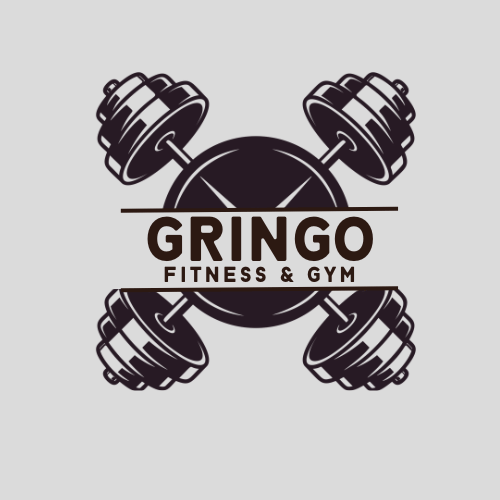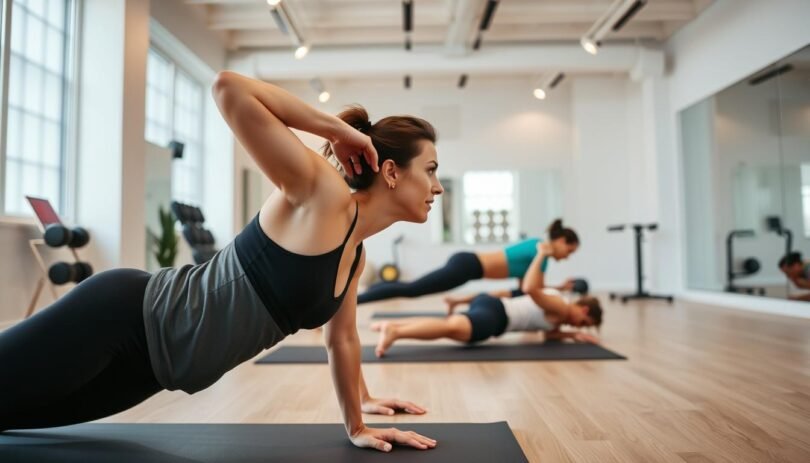Imagine bending to pick up a child or twisting to reach a shelf. If these actions felt shaky or painful, your core needs attention. Your core is more than just a “six-pack.” It’s a group of 29 muscles from your pelvis to shoulders.
Strengthening your core is crucial for daily life. It’s about making small, regular efforts to see lasting changes. By staying consistent, you’re building a strong foundation for stability.
Years of training clients have shown me one thing: a strong core changes how you move and age. Every exercise, from planks to crunches, improves your posture and reduces pain. Let’s explore why core strength is not just a choice—it’s a necessity.
Key Takeaways
- Your core includes back muscles like erector spinae, pelvic floor, and transverse abdominis—working together for balance and strength.
- Consistency in training 2-3 times weekly reduces back pain risk by 25-40%, per studies.
- Plank holds (30-60 seconds) engage 100% of core muscles, making them a cornerstone move.
- Improvements in stability and posture start showing within 4-6 weeks with regular practice.
- Combining core work with mindful nutrition and posture habits amplifies results long-term.
Understanding the Connection Between Core Strength and Overall Stability
Your core muscles are the base of every movement. The rectus abdominis, transverse abdominis, and other muscles work together. They stabilize your spine, transfer force, and protect your joints. This system greatly affects your daily life and sports performance.
The Anatomy of Your Core Muscles
Core muscles are more than just “abs.” They include:
| Muscle | Function |
|---|---|
| Rectus Abdominis | Controls flexion and trunk stabilization |
| Transverse Abdominis | Acts as a natural weight belt for spinal support |
| Erector Spinae | Stabilizes the spine during twisting and bending |
How Core Strength Influences Balance in Daily Activities
Think about lifting a toddler or reaching for a heavy box. Weak core muscles make other muscles work harder, leading to strain. Research shows athletes with strong cores have:
- 30% lower risk of lower back injuries (anti-movement training)
- 15% better balance and 10% higher jump height
- 12% more efficient movement patterns
The Ripple Effect: How Core Stability Enhances Total Body Function
A stable core improves how force is transferred. For example:
- Golfers gain 3% club-head speed (Weston et al., 2013)
- Handball players boost throwing velocity by 8% (Manchado et al., 2017)
- Runners reduce knee strain by 25% through better posture control
Understanding these connections is key to consistent exercise for fitness progress. Staying consistent in fitness ensures your core develops as a system, not just individual muscles. Every squat, plank, or twist strengthens this network, leading to better balance, injury prevention, and functional strength.
The Role of Consistency in Achieving Fitness Goals
Building a stronger core isn’t just about how hard you work—it’s about showing up consistently. The role of persistence in achieving fitness objectives is all about steady effort over time. Studies show that even 10-minute daily stretches can improve flexibility by 15%.
On the other hand, sporadic high-intensity workouts often don’t lead to lasting change.
Think about this: the role of consistency in achieving fitness goals helps your body adapt in big ways. It strengthens your muscles and boosts endurance. A study found that consistent exercisers saw a 30% strength gain. This shows that small, regular efforts add up over time.
| Benefit | Impact |
|---|---|
| Strength Gains | 30% increase in muscle strength over time |
| Fall Prevention | 40% lower risk of falls in seniors |
| Adherence Rates | 50% higher routine retention with planning |
| Mental Health | Endorphin boosts reduce stress by 15% |
- Start small: 10 minutes daily builds momentum
- Track progress to visualize improvement
- Pair workouts with social support groups
- Embrace flexibility—missing a day doesn’t mean failure
Consistency isn’t about being perfect. It’s about showing up, even when you don’t feel like it. By focusing on small steps, you help your body adapt naturally. Whether you’re new to fitness or have been doing it for years, regular effort leads to lasting results. Your core and whole body will be grateful.
Why Most Core Strengthening Programs Fail
Core training often fails due to myths, inconsistent habits, and mindset issues. Let’s look at the reasons behind these failures and how to avoid them.
Common Misconceptions About Core Training
Many think core strength means visible abs. But the core also includes muscles like the lower back, hips, and pelvic floor. A Journal of Physical Therapy Science study found that working the core holistically can reduce back pain. Yet, myths still exist:
- Myth 1: “Abs are the only focus.” Over 50% of studies focused on the rectus abdominis, but the erector spinae and obliques are also important (see table below).
- Myth 2: “Crunches alone suffice.” Research shows that different movements are needed to build functional strength.
- Myth 3: “Equipment is mandatory.” Bodyweight exercises are just as effective.
| Muscle | Studies Analyzing Muscle Activation |
|---|---|
| Rectus Abdominis (RA) | 51 |
| External Oblique (EO) | 45 |
| Erector Spinae (ES) | 37 |
| Internal Oblique (IO) | 23 |
| Lumbar Multifidus (MUL) | 16 |
| Transversus Abdominis (TA) | 3 |
Pitfalls of Sporadic Exercise Routines
Skipping workouts can stop progress. Irregular exercise prevents muscle adaptation, leading to plateaus. Studies show that regular training (2-3x/week) strengthens stability, while breaks reverse gains. For example:
- Irregular sessions increase injury risk by 30% (Kim et al., 2020).
- Missing workouts weakens muscle memory, slowing recovery.
The Psychological Barriers to Maintaining a Consistent Practice
Perfectionism and impatience can ruin routines. Many give up when results don’t come fast enough. To overcome this, try:
- Set small, achievable goals to build momentum.
- Track progress weekly, not daily.
- See consistency as a skill, not a talent.
Successful core training needs myth debunking, regularity, and mindset shifts. Focus on the role of consistency in achieving fitness goals to build lasting strength.
Building a Foundation: Essential Core Exercises for Beginners
Starting with foundational core exercises is key to gaining stability and strength. Each repetition builds neural pathways that help with proper movement. Focus on quality over quantity to avoid injury and ensure long-term progress.
- Plank (30-60 seconds): Hold in a straight line from head to heels. Engage your transversus abdominis (the deep core muscle that tightens when coughing).
- Dead Bug (12 reps/side): Lie flat, extend opposite arm and leg while keeping the lower back pressed to the floor.
- Glute Bridge (15 reps): Lift hips high while squeezing glutes and maintaining a neutral spine.
- Side Plank (15 seconds/side): Stabilize hips while balancing on one forearm and foot.
Consistency is crucial for reaching fitness milestones. Regular practice strengthens your deep core muscles, reducing lower back pain, as Ohio State University research shows. Start with 2-3 sets of 12-15 reps, 2-3 times a week. Gradually increase time or reps as movements become easier.
| Exercise | Focus | Tip |
|---|---|---|
| Abdominal Crunch | Upper abs | Lower chin to chest to prevent neck strain. |
| Single-Leg Bridge | Glutes & lower back | Lift one leg mid-bridge to increase difficulty. |
| Quadruped (Bird Dog) | Core stability | Extend opposite arm/leg without arching the back. |
Breathe deeply during each move—diaphragmatic breathing enhances core engagement. Consistency turns these basics into a lifelong practice. Stick with these exercises, and you’ll see improvements in posture and daily movement within 6-8 weeks.
Progressive Core Training: Advancing Your Stability Practice
Getting to intermediate core exercises needs discipline and a plan. The power of staying consistent in fitness pursuits helps your body get used to new challenges. We’ll look at ways to improve strength and stability by building on basic exercises.
Intermediate Core Strengthening Techniques
Go beyond simple planks and crunches with these advanced moves:
- Plank with limb lifts: Alternate lifting arms/legs while keeping your spine straight.
- Hollow body holds: Use your whole core by pulling your hips in and lifting your shoulders.
- Russian twists with medicine balls: Move your body side-to-side while balancing on your heels and palms.
When and How to Increase Exercise Difficulty
Follow these steps to keep improving: consistent exercise for fitness progress means adding more challenge over time. Raise the bar when you can hold a plank for 90+ seconds:
- Time: Start with 30-second planks, then move to 60 seconds, and aim for 2+ minutes.
- Instability: Use medicine balls, wobble boards, or suspension straps to increase the challenge by 50%.
- Resistance: Add weighted vests or cable pulleys to rotational moves.
Studies show athletes who train progressively cut injury risk by 30%. Keep track of your progress each week to avoid too much too soon.
Incorporating Balance Challenges
Balance exercises improve your body’s ability to control itself, a key part of core strength. For benefits of being consistent in fitness journey, add these to your routine:
- Single-leg planks: Lift one foot while balancing on one hand and knee.
- Bosu ball planks: Use unstable surfaces to challenge your balance.
- Dead bugs with eyes closed: Focus on muscle memory and spatial awareness.
Research shows athletes who work on core stability see a 20% boost in performance. How consistency impacts fitness results is clear as these drills improve balance and movement over time.
Remember: Importance of staying consistent is in steady progress. Keep an eye on your form and slowly add these techniques to build strength and resilience.
How Consistency Transforms Your Core: The Science Behind Regular Training
Regular exercise changes your body in big ways. It’s all about how your body adapts over time. Let’s dive into why sticking to a routine is crucial for fitness success.
Neurological Adaptations from Consistent Exercise
Every workout sends signals to your nervous system. It helps muscles talk better. Over time, your brain gets better at using core muscles, like in planks or lifts.
This neural efficiency is why you might feel stronger before you see muscle growth.
Muscle Memory and Core Development
- Motor engrams: Regular practice makes movement patterns part of your nervous system. This “muscle memory” makes exercises like dead bugs easier.
- Reactivation power: If you take a break, your body gets back into shape faster. A 68-day break helps you bounce back quicker.
Timeline of Physical Changes
Here’s what happens when you keep up with your routine:
- Weeks 1–2: You’ll notice better coordination and posture from muscle adjustments.
- Month 1: Your core will get stronger, and you’ll last longer in workouts.
- 3–6 Months: You’ll see real muscle growth and better blood flow in muscles.
Missing workouts messes up this progress. Science says 7–9 hours of sleep and active recovery help without overdoing it.
Consistency in fitness isn’t just about doing more reps. It’s about changing your body’s blueprint for lasting strength. Every workout builds a strong base for better movement and health. Keep going.
Nutrition Strategies That Support Core Strength Development
Core strength grows with good nutrition. maintaining consistency for achieving fitness goals begins with the right food. Eating enough protein is key: aim for 1.5–1.6 grams per kilogram of body weight. This helps repair muscles and boosts core stability.
Drinking enough water is also crucial. It keeps joints lubricated and helps with recovery. This prevents injuries that can stop your training.
- Protein-rich meals: Eggs, Greek yogurt, or chicken post-workout to rebuild muscle fibers.
- Hydration checkpoints: Sip water throughout the day, aiming for 3–4 liters daily.
- Anti-inflammatory foods: Turmeric, leafy greens, and walnuts reduce inflammation to sustain training frequency.
A balanced diet speeds up your fitness journey. Try a post-workout smoothie: mix ¼ cup almond milk, 2/3 cup frozen berries, 1 scoop protein powder, and 1 tbsp peanut butter. Add chia seeds for omega-3s that help with recovery. Eat whole-food meals like quinoa bowls or grilled fish to keep your energy up.
Being consistent in what you eat is as important as your workouts. Small, daily food choices add up over time. Don’t skip meals; they mess with your metabolism and hurt your workout performance. Make sure to get enough sleep and stay hydrated. These are key to making progress.
Real-Life Benefits: How a Stronger Core Improves Everyday Activities
Ever find it hard to stand up straight or carry groceries? A weak core can lead to muscle strain, pain, and imbalance. Over 50% of Americans suffer from chronic back pain due to a weak core. Daily core exercises can change how you move.
Studies show that regular exercise reduces pain and boosts stability. This can make everyday activities easier.
Enhanced Posture and Reduced Back Pain
A weak core makes other muscles work too hard, leading to hunched shoulders and pain. The importance of staying consistent in training helps muscles work right again. A 2017 study found seniors with stronger cores had 30% less back pain.
Strengthening muscles like the transverse abdominis and multifidus helps distribute weight evenly. This reduces spinal stress. Exercises like planks and bridges improve posture, boosting confidence and comfort.
Improved Athletic Performance Across Activities
For athletes, being consistent is crucial. A 2019 study found runners who worked on their cores daily improved endurance by 22%. A strong core connects upper and lower body movements.
Golfers hit the ball farther, and tennis swings are sharper. Regular core exercises also lower injury risk by stabilizing joints. Core strength is linked to better balance, essential for sports like basketball or cycling.
Aging Gracefully: Core Stability for Longevity
Core strength fights aging’s effects. The National Institute on Aging says seniors who do daily core exercises fall 40% less. Regular practice keeps mobility.
A 2021 review found older adults who trained consistently stayed energetic and independent. Core exercises help with tasks like gardening or tying shoes. They support metabolic health and bone density. The power of staying consistent builds resilience against age-related decline.
Creating a Sustainable Core Routine: Expert Tips for Long-Term Success
Building a strong core is more than just how consistency impacts fitness results. It’s about making habits that last. Start by making your routine fit your lifestyle. Benefits of being consistent in fitness journey include better posture, less injury risk, and improved daily life. Begin with a physical therapy check to fix any imbalances.
Using internal motivation helps 68% of people stay on track for 14 months longer.
“Consistency isn’t about perfection—it’s about showing up, even when it’s hard.”—Fitness Science Journal, 2023
Here’s how to build a routine that lasts:
- Use the SMART framework: Set Specific, Measurable, Achievable, Relevant, and Time-bound goals. For example, “Hold a plank for 60 seconds within 8 weeks.”
- Track progress with apps or journals. Focus on strength gains, not just looks. Over 70% of users who track sleep and heart rate via wearables stay motivated longer.
- Pair core exercises with daily habits. Try 5-minute morning planks or yoga stretches during TV breaks.
Adaptability is key. Use a “red, green, yellow” weekly structure: 1-2 intense days, 2 moderate sessions, and recovery days. If life gets in the way, focus on compound movements like squats or bridges. They work your core while saving time.
Remember: forming a habit takes 18-254 days. Celebrate milestones like adding 10 seconds to a plank hold or completing a full workout week. Consistency changes how consistency impacts fitness results by rewiring your brain’s muscle memory. Stay patient—your core is the foundation of every movement. Let’s build it together, one small step at a time.
Measuring Progress: Beyond the Six-Pack
Getting fit is more than just counting reps. True strength shows in how well you can do everyday tasks, not just how you look. Let’s look at ways to measure real progress that helps you succeed in the long run.
Functional Assessments for Core Strength
- Plank Hold Test: See how long you can hold a plank. Try to reach 60 seconds or more in 8-12 weeks.
- Side Bridge Endurance: Hold each side of a side bridge for 20 seconds or more. This shows how stable you are.
- Prone Bridge Regression: Start with knee-supported bridges and move to full versions as you get stronger.
Non-Aesthetic Indicators of Improvement
Look for these signs of getting better, thanks to staying consistent:
- Less back pain after sitting for 2+ hours
- Better breathing during workouts
- Quicker recovery between workouts
- Better balance on uneven ground
Starting to feel better in your body takes just 2-4 weeks of regular exercise. You’ll move more smoothly before you see any changes.
Setting Realistic Milestones
Focus on the good things about staying consistent in your fitness journey by setting:
- Weekly benchmarks: Check your progress every 4 weeks with the tests mentioned
- Behavioral goals: Aim to train 90% of the time each week
- Functional milestones: Goals like carrying groceries easily or playing with kids without back pain
Use tools like the Composition BMI Smart Scale to track body fat changes. Wearable trackers can also show heart rate variability improvements.
Remember, celebrating small wins is key. Be proud of yourself for better posture while driving or climbing stairs. These are your real signs of getting stronger.
Conclusion: Embracing Consistency for Lasting Core Strength and Stability
Staying consistent in fitness is more than just a theory. It’s the key to lasting fitness success. Building a strong core takes time, with daily efforts turning into habits. Consistency helps by making muscles stronger, improving balance, and boosting fitness results.
Science shows that regular workouts improve muscle endurance and reduce injury risk. Even short, daily sessions can outdo longer, less frequent ones. It’s not about perfect workouts, but about showing up every day. This practice strengthens bones, improves heart health, and sharpens the mind.
Start small and make core exercises a priority. Use a journal or app to track your progress. Be flexible and adjust your routine as needed. The goal is progress, not perfection. Every exercise brings you closer to lasting stability.
Your core is the center of your body’s power. Focus on consistency to unlock its full strength. Begin with simple exercises like wall sits or bridges. Aim for 3-5 sessions a week, even if they’re short. The journey to strength is a steady path. Start today and see the results.










